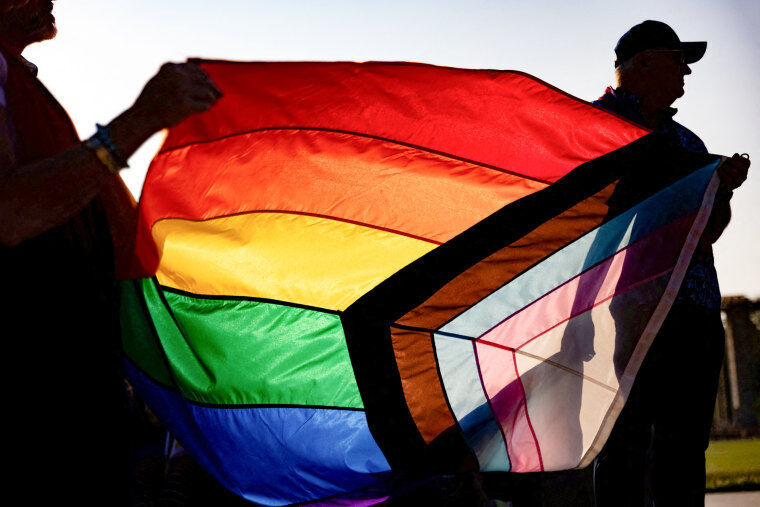
The percentage of lesbian, gay, bisexual, transgender and queer adults in the U.S. continues to increase, reaching an all-time high of 7.6% in 2023, according to a new Gallup report. Broken down by gender, the survey of 12,000 people 18 and older across the country found that women were nearly twice as likely as men to identify as LGBTQ.
"Almost 30% of Gen Z women identify as LGBTQ+, most as bisexual," Jeffrey Jones, a senior editor at Gallup, told NBC News. "That's where a lot of the growth seems to be happening."
This is the first year Gallup has laid out its annual LGBTQ identification report in a way that breaks down each generation by gender. Looking at all generations, 8.5% of women and 4.7% of men identified as LGBTQ, the survey found. The survey reported margins of sampling error of plus or minus 4 percentage points among LGBTQ respondents.
Parsing each generation, the gender story gets more interesting. In the three younger generations surveyed — Generation Z, millennials and Generation X — women are more likely than men to identify as LGBTQ. However, in the two oldest generations — baby boomers and the Silent Generation — it is reversed. (The gender breakdown does not account for nonbinary respondents, who represented about 1% of those surveyed.)
The group most likely to identify as LGBTQ, by far, was Generation Z women (ages 18 to 26), 28.5% of whom identified as LGBTQ in the survey. The lion's share of them, of all Gen Z women surveyed, 20.7%, identified as bisexual, followed by 5.4% who identified as lesbians. Gen Z women were nearly three times more likely than Gen Z men to identify as LGBTQ.

"It's important how much the LGBTQ community is bisexual, and that's definitely something we see among the younger generations," Jones said.
Jones also noted that the survey allows respondents to write in their identities if they are not among the provided options, and he said more people are writing in "pansexual" and "asexual," though they are still a small proportion of respondents — 3% of LGBTQ respondents and 0.2% of total respondents.
As Gallup has noted in its previous annual surveys, younger generations are far more likely to identify as LGBTQ than their older counterparts.
"Overall, each younger generation is about twice as likely as the generation that preceded it to identify as LGBTQ+," says the report, which was published Wednesday. "More than one in five Gen Z adults, ranging in age from 18 to 26 in 2023, identify as LGBTQ+, as do nearly one in 10 millennials (aged 27 to 42)."
Only 1% of those in the Silent Generation, the youngest of whom are in their late 70s, identified as LGBTQ.
Since Gallup started measuring the U.S. LGBTQ population in 2012, when 3.5% of respondents identified as part of the community, there has been a consistent increase. Jones expects the trend to continue.
"Sometime in the next 10 to 30 years, we'll hit 10%," he said.
How soon that happens, he added, depends partly on the life span of those in the Silent Generation, who are the least likely to identify as LGBTQ, at just over 1%.
Brooke Sopelsa is the editorial director of NBC Out, NBC News' LGBTQ digital destination.



I grew up with my father in the military so I saw a lot of different cultures in all the places he was stationed. I ended up marrying an Irish/English lass and my brother a German girl.